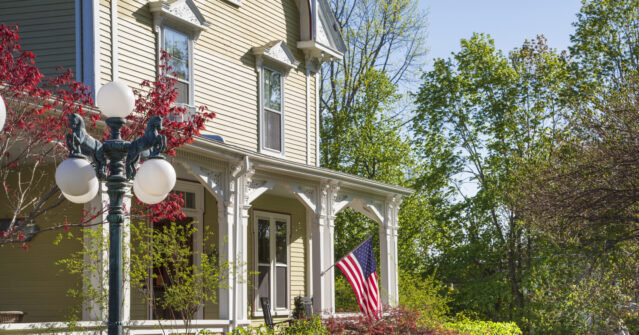Sales of previously owned homes declined more than expected in June, as elevated mortgage rates continued to suppress buyer activity despite rising inventory levels.
Existing-home sales fell 2.7 percent from May, dropping to a seasonally adjusted annual rate of 3.93 million, the National Association of Realtors said Tuesday. That marked one of the weakest monthly readings in more than a decade and was below economists’ forecasts for a smaller 0.7 percent decline. Compared with a year earlier, sales were unchanged.
The repor captures deals that were typically agreed to in April and May—periods when the average rate on a 30-year fixed mortgage rose above 7 percent multiple times. As of this week, the rate stood at 6.77 percent, near the highs of the past year.
Despite the slowdown in sales, home prices continued to rise. The median existing-home price hit $435,300, a record high for June and a 2 percent increase from a year ago, marking the 24th consecutive month of annual price gains.
Total housing inventory stood at 1.53 million units at the end of June, a 15.9 percent increase from a year earlier and equivalent to 4.7 months’ supply at the current sales pace. A six-month supply is considered a balanced market.
While the rise in inventory suggests some easing, the market remains tight for first-time and lower-income buyers. Homes listed under $100,000 saw sales fall 5 percent year over year, while sales of homes priced above $1 million rose 14 percent. The share of first-time buyers remained at 30 percent, below the long-term average of 40 percent. All-cash purchases accounted for 29 percent of transactions.
Houses spent more time on the market in June, averaging 27 days before going under contract, up from 22 days a year earlier. Listings received an average of 2.4 offers, down from 2.9 a year ago.
Economists say the high level of mortgage rates—driven by the Federal Reserve’s tight policy stance—is the primary factor holding back the housing market. While job growth and income gains have supported consumer demand broadly, the affordability ceiling remains a major constraint on housing activity.
Market analysts have suggested that a meaningful increase in sales will likely require a drop in borrowing costs. Some forecasts anticipate lower rates in the second half of the year, contingent on inflation continuing to ease and the Fed beginning to cut rates.
Former President Donald Trump has repeatedly called for the Federal Reserve to lower interest rates, arguing that high borrowing costs are restricting access to homeownership and slowing the broader economy.
The housing market remains highly sensitive to rate movements, with existing homeowners hesitant to sell and give up low-rate mortgages and buyers facing reduced purchasing power. As a result, turnover remains muted even as demand persists.
Read the full article here
